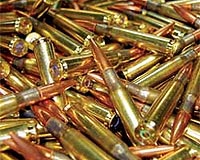| . |  |
. |
Washington (UPI) May 8, 2009 Small professional armies are much more popular for large, prosperous, secure nations and empires to run than massive conscript armies. That is why the army of the Roman Empire for hundreds of years was far smaller than the enormous citizen armies that the old Roman Republic was able to raise in earlier centuries from a seemingly limitless reservoir of sturdy yeoman farmers in the Italian peninsula. It is also the reason why France has continued to operate its Foreign Legion for decades with great success even after it no longer needed large conscript armies to fight major wars in Europe or in its major counterinsurgency campaigns around the world in countries like Algeria and Vietnam. Any serious move to re-establish military conscription in the United States would likely be a political catastrophe that would destroy any administration in Washington that ordered it. Unlike the period from World War II through the Korean War, there is not, and there has not been for decades in the United States, any broad-based agreement across the political spectrum that mass conscription for military service is either desirable or necessary. Both the American liberal left and the libertarian, free-market wing of the conservative movement would fiercely oppose it. However, in coming decades the United States may be rocked by terrorist attacks or waves of serious pandemic disease, either from natural causes or, as United Press International columnist and leading fourth-generation war analyst William S. Lind has warned, from diseases that have been deliberately genetically engineered. If any of those dire scenarios come to pass, and if the U.S. government fails to provide effective protection against them, individual states or local smaller communities may rally to their National Guard forces or to their state, country and town law-enforcement agencies in far greater numbers. This may prove to be necessary because, as Gen. David Petraeus, the most eminent authority in the U.S. armed forces on counterinsurgency conflict in the 21st century, has rightly warned, the basic job of any military force fighting guerrilla/terror groups carrying out terrorist attacks is to protect the public from them, and this always requires a high ratio of armed forces to the total population. This reasoning was behind Petraeus's successful surge policy in Iraq over the past two and a quarter years that dramatically reduced the levels of violence there. It is notable that the incidence of suicide bombings in Iraq is rising again following President Barack Obama's announcement that he wants to reduce U.S. troop levels there by more than 100,000 by the end of next year. It is very expensive to expand the numbers of a skilled elite professional force like the current U.S. Army and U.S. Marine Corps in a large way. The same principle applied to the old Roman army 1,800 years ago. That is because the benefits and relative pay scales offered to professionals being recruited out of a generally peaceful and prosperous society cost a lot of money, especially when lifelong pensions, education packages and healthcare after retirement from the professional forces are factored in. Nations like Israel, which has continued conscription, or India, which maintains a large land army relatively cheaply, are not limited by the cost constraints of relying solely or primarily on a professional force. But in the coming 21st century age of wars, having excellent but relatively small land forces, as we have noted in previous analyses in this series, is not going to be enough. For the nature of war is changing -- and not for the better. Part 8: The origins of war in the 21st century Share This Article With Planet Earth
Related Links The Military Industrial Complex at SpaceWar.com Learn about the Superpowers of the 21st Century at SpaceWar.com
 More Ammo For The Army Part Six
More Ammo For The Army Part SixWashington (UPI) May 8, 2009 There are three basic stages in the ammunition supply chain to provide the U.S. armed forces with the ordnance that is necessary to successfully conduct their military operations. The first of these is the production or acquisition of basic materials, mostly energetics -- propellants and explosives -- but also metal parts, detonators, fuses and other ordnance. There are many diff ... read more |
|
| The content herein, unless otherwise known to be public domain, are Copyright 1995-2009 - SpaceDaily. AFP and UPI Wire Stories are copyright Agence France-Presse and United Press International. ESA Portal Reports are copyright European Space Agency. All NASA sourced material is public domain. Additional copyrights may apply in whole or part to other bona fide parties. Advertising does not imply endorsement,agreement or approval of any opinions, statements or information provided by SpaceDaily on any Web page published or hosted by SpaceDaily. Privacy Statement |